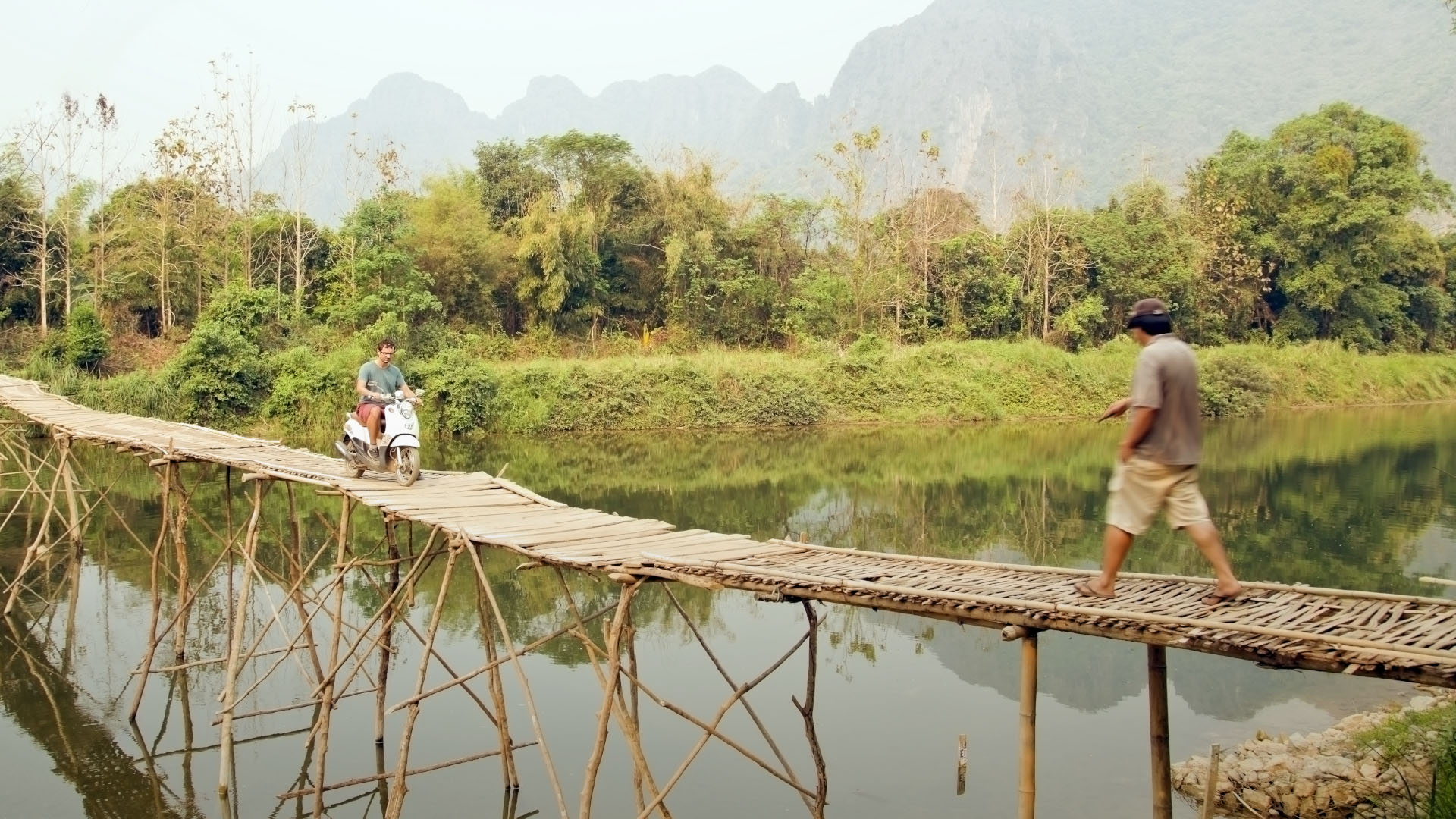The people of one village were motivated by the idea of God’s care for them to take on a major project and improve their home.
The tiny village Sitio Gulod literally means “hilltop.” The ivy-covered, stone walls around the town overlook lush fields and dense jungle which hum with the constant symphony of insects and birds. The dirt roads are muddy more often than not and sometimes are even below standing water.
Farther down, the fields flood every time it rains, which is often in the Philippines. Locals laid a few bamboo poles over the worst spots, but the crossing was rickety and unreliable.
Making a Map of God’s Gifts
When we entered Sitio Gulod, we were quickly introduced to two leaders in the village who eagerly welcomed the team. They were very interested in the idea that a right relationship with God should lead to holistic development in communities.
Despite a wealth of natural resources, Sitio Gulod is by and large very poor.
These two local leaders wanted to see if our team could help them find a solution to the issue of poverty, so they invited everyone to come back the next month and lead a meeting with the foremost members of the village.
We spent their time before the meeting making a map of the potential assets that were naturally present. When the time came, we set up this map for everyone at the village meeting to see, pointed out each feature and asked them if they felt it was accurate.
Obviously, the locals know Sitio Gulod and the surrounding area much better than we do, and they eagerly added some resources that we had overlooked.
It was an encouraging beginning, but we knew that sooner or later we’d face a common problem that almost all our work encounters. So it was almost a relief that the issue came up that very evening.
In fact, it emerged while we were still showing everyone the map.
Overcoming the First Obstacle
Many of the poverty stricken areas we come across have a strange appearing conflict: they have plenty of resources all around them, leading locals are very intelligent and skilled but somehow the area is still bogged down by malnutrition, health problems, lack of reliable schooling and a host of other problems caused by poverty.
These are also usually the areas frequented by nonprofit groups who want to help with the obvious suffering they find.
Somehow, though, few of the gifts seem to make a lasting impact beyond a couple years. Problems return and people settle down to wait for the next charity to arrive with aid.
While our facilitator was presenting the map, we overheard a woman whisper to her neighbor, “After this meeting, they’ll definitely hand out rice and canned goods.”
Clearing her throat, our team’s presenter took this opportunity to explain our belief that God has gifted each person with ingenuity and resources to improve their lives and the world around them. Using our abilities and gifts is a way to honor our Lord; for some, it can also be a form of worship.
Confusion wrote itself across a few faces; others perked up and seemed even more interested.
Taking Ownership of the Bridge
Within the next month, we returned several times and noticed a group that was particularly faithful to attend meetings and seemed really engaged with the ideas that were being discussed.
They soon identified a priority need: repairing a 130-foot-long bamboo bridge and footpath that was badly worn out and had collapsed in some spots.
Splitting up, they made a list of items they’d need to fix the path and checked off those they could locally source and others they didn’t have. The village leaders offered to provide one sack of cement; a small church inside the community pulled together enough money to buy another bag of cement, and the youth group saved up enough to provide the aluminum wire and nails.
A local man who owned some land with bamboo trees offered to let the bridge repair team take some of his bamboo. When he heard what they were doing, he refused to let them pay him. The people of a nearby village who often travel into Sitio Gulod heard what was happening. Since they didn’t have any money contribute to the project, the men volunteered to cut and haul the bamboo as well as construct the footpath.
Passersby who saw the ongoing work on the footpath and bridge begin pitching in and bringing any materials they noticed were needed.
The same woman who’d whispered about the handouts in our mapping meeting began offering food and vegetables to workers and our team. She’d harvested them from her own gardens.
The Path of the Righteous
Over the course of three months, the project progressed and our team continued to meet with village residents to encourage them, sharing physical and spiritual lessons. Ten people who were unbelievers came to know Christ as a result.
Finally, the bridge was finished, just in time for the rainy season.
The new path is wider and sturdier with good supports and a handrail for those who must cross balancing bags and an umbrella. Now children going to school and workers can safely pass through the flooded fields.
As one local women pointed out, “Being poor is not a hindrance to be involved in the development of our community. It feels good to show others God’s love through the bamboo bridge.”
“The path of the righteous is like the morning sun, shining ever brighter till the full light of day” (Proverbs 4:18 NLT).
